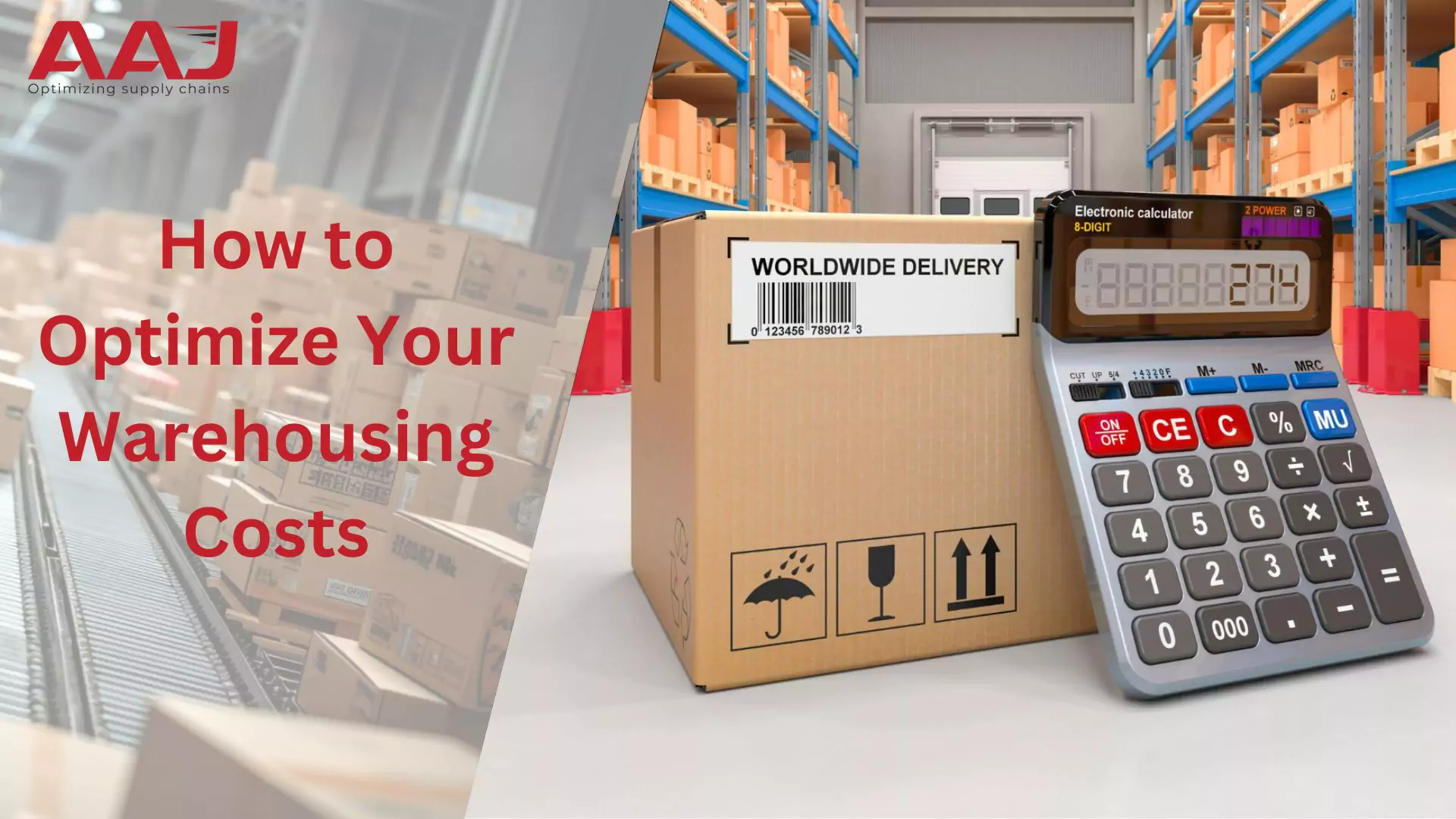If you own a business, you must have heard about warehouse services, which are often confused with storage facilities. Before leveraging such services for your businesses, you must know the key differences between warehousing and storage facilities. This blog will acquaint you with the difference between warehouse and storage facilities.
Let's Start With the Definition of Warehouse and Storage
Warehousing Service
Warehousing is an integral part of logistics services. warehouse is a commercial space set up in an industrial area used to store goods. Wholesalers, manufacturers, exporters, retailers, and transporters use this warehouse space to meet individual needs. Warehouses are usually sufficient for industrial or commercial operations.
Warehouses use large resources for the shipment and unloading of products Based on the needs of businesses, there are different warehouse facility options you can opt for.
Storage Services
Storage is simply the act of keeping things in a safe place until they are needed. It’s like having a closet or a storage room in your home where you keep things you don’t use every day but might need later. In the case of businesses, storage involves keeping products, materials, or goods in a secure place until they are ready to be used, sold, or moved somewhere else.
Major Difference Between Warehouse and Storage
Generally, both warehouse and storage facilities cater to your storage requirements, but they differ from each other in different aspects, as mentioned below:-
Goods Accommodating Space
When it comes to storing goods, storages have less space than warehouses, and the former is capable of storing things that are important but are rarely used. If your business is in the initial stages of growth, get the advantage of such spaces at a reasonable price. Contrarily, warehouses are more suitable for large-scale businesses equipped with resources to meet shipping, transport, and order fulfillment requirements.
Storage Time
Since storage facilities are smaller in size, these are usually ideal for putting up goods for a short time. In contrast to this, warehousing accommodates goods for a longer time.
Both storage facilities are pivotal to maintaining supply chain management operations. Based on your preferences and requirements, get the storing solution accordingly.
Security of Goods
Warehouses enable high-end security in comparison to storage facilities. Goods in a warehouse are monitored well and secured nicely. Large storage spaces like warehouses are more challenging to monitor goods nicely.
To enhance security, you must enable surveillance to keep a check on every movement or activity. On the contrary, storage facilities are small but have top-notch different-level security systems in an enclosed space, and limited people can access goods.
Expenses
Since warehouse space is set up in a large area, it requires more funds and resources to manage all operations. A warehouse facility is used for storing in-demand products for all-time availability, and a storage facility is used to store less-in-demand goods.
Warehousing requires accurate inventory management, staffing, and transportation, costing more than a storage facility. However, both facilities are individually important for businesses based on their needs.
Efficient Services
Even though warehouses require more resources to manage supply chain management operations, they are efficient as they provide additional services that include packaging, shipping, and transportation of the products. Typically, storage facilities don’t provide such services. However, a storage facility can be cost-effective for safely storing small quantities of goods.
Difference Between Storage and Warehouse
| Aspect | Warehousing | Storage |
| Purpose | Warehousing is a part of the logistics process that involves the storage and distribution of goods. It acts as a hub for receiving, storing, and distributing products to various locations. | Storage is the act of keeping goods in a safe and secure place for future use or sale. It is a subset of warehousing and primarily focuses on the safekeeping of products. |
| Activities | In addition to storage, warehousing involves various activities such as inventory management, order processing, picking, packing, and shipping. | Storage primarily involves the act of storing goods safely and securely. |
| Scale | Warehousing operations are typically larger in scale, involving extensive facilities and sophisticated systems for managing the flow of goods. | Storage can range from small-scale (e.g., a storage room or closet) to large-scale (e.g., a dedicated storage facility). |
| Complexity | Warehousing is a more complex process that involves coordinating multiple activities and optimizing the flow of goods to meet customer demand. | Storage is a relatively simpler process focused on the safe and secure keeping of goods. |
| Technology | Warehousing often employs advanced technologies like warehouse management systems (WMS), automated material handling equipment, and barcoding systems to streamline operations. | Storage may or may not involve the use of advanced technologies, depending on the scale and complexity of the operation. |
| Inventory Management | Warehousing involves robust inventory management practices to track and control the movement of goods. | Storage may or may not involve inventory management, depending on the nature of the operation. |
| Distribution | Warehousing is closely tied to the distribution process, facilitating the efficient movement of goods to various destinations. | Storage is not directly linked to distribution but may precede or follow it. |
| Value-added Services | Warehousing can include value-added services like product assembly, labeling, kitting, and packaging. | Storage typically does not involve value-added services. |
| Duration | Warehousing is typically a temporary holding place for goods, with products moving in and out regularly. | Storage can be short-term or long-term, depending on the specific requirements. |
| Facility Size | Warehouses are often large facilities with ample space for storing and maneuvering goods. | Storage facilities can vary in size, ranging from small rooms to large dedicated buildings. |
| Function | The primary function of warehousing is to facilitate the efficient flow of goods through the supply chain. | The primary function of storage is to keep goods secure and protected until they are needed or sold. |
| Location | Warehouses are strategically located near transportation hubs, distribution centers, or customer bases to optimize logistics. | Storage facilities can be located more flexibly, depending on the specific needs and constraints. |
Type of Warehouse Facility
To get the advantage of warehouse facilities, know their different types here:
Bonded Warehouse
Bonded warehouses are also referred to as customs warehouses. These spaces are built in an industrial area to store goods, manipulate, or undergo manufacturing operations for imported goods.
The customs duty on imported goods is high and may lower the profitability of businesses. This is why these warehouses emphasize selling such products first; the sale compensates for the product duty.
Public Warehouse
Government or semi-government bodies own public warehouses and lend the space to private organizations to store and manage goods. A public warehouse service is an excellent option for your warehousing needs if you own a small-scale enterprise. You can manage the storage needs of your goods until you settle with your own warehouses.
Private Warehouse
Large-scale retail corporations, wholesalers, manufacturers, or distributors own private warehouses to store their batches of goods. Owners of private warehouses need a considerable capital investment for their smooth functioning. Mostly, large businesses own private warehouses to accomplish their eCommerce warehousing needs.
Such businesses store products in large quantities and distribute them as per the demand in the market.
Type of Storage Facility
Like warehouses, there are many storage facilities as well. Here are the types of storage facilities:
Self-Storage Facility
Small-scale businesses can benefit from self-storage facilities if they have a defined set of goods. Different storage facilities can have different policies for businesses to use the space, providing them with access to a storage unit at their convenience.
Mini-Storage
Mini-storage is a storage space where businesses get access to a small unit. These storages are compact, and you can take advantage of storing household goods, business inventories, and other personal belongings.
You can rent a mini-storage space every month and get round-the-clock accessibility. It is more flexible and convenient than warehousing but doesn’t ensure the packaging, shipping, and transportation operations; it only takes care of storage needs.
Summing Up
Storage facilities are excellent for personal and small-scale business usage. Contrarily, warehousing facility fulfill the needs of large-scale businesses and are capable enough for storing and shipment of goods in bulk.
Warehousing and storage facilities offer individual benefits to businesses to suit their needs. If you want an efficient warehouse management facility, AAJ Enterprises is a reliable name that can optimize your Ecommerce warehousing needs. By understanding your business requirements, our expert professionals help project the growth of your business. We help businesses visualize their scalability while leveraging our advanced services.
About the author:
Read all of Aaj Enterprises Posts



